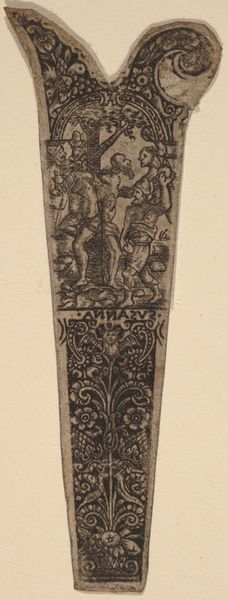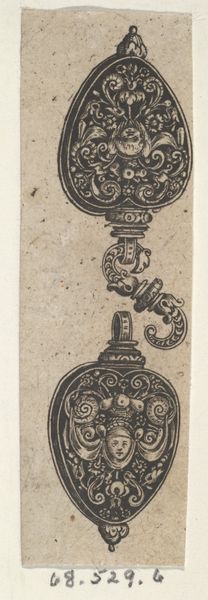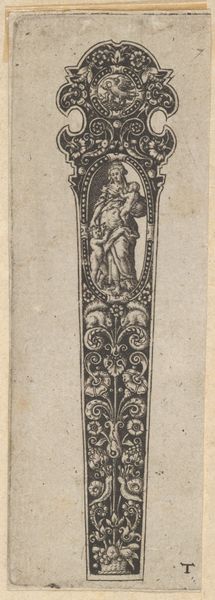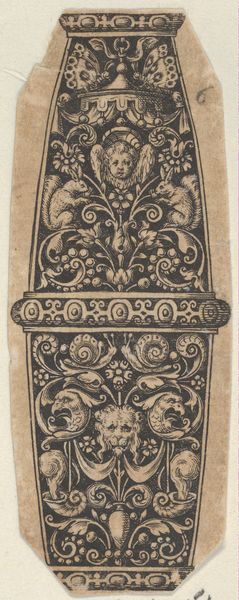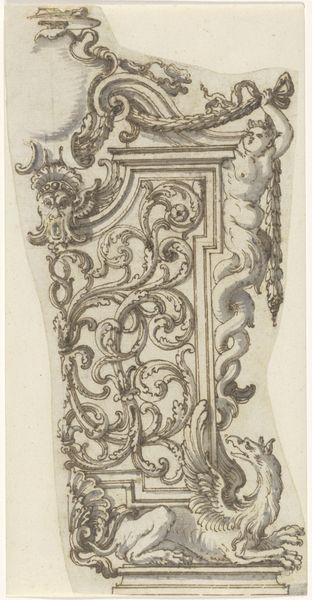
Design for a Knife Handle (Fragment from Manches de Coutiaus) 1580 - 1600
0:00
0:00
drawing, print, ink, engraving
#
drawing
# print
#
mannerism
#
figuration
#
ink
#
history-painting
#
engraving
Dimensions: Sheet (trimmed): 2 5/16 × 13/16 in. (5.9 × 2.1 cm)
Copyright: Public Domain
This design for a knife handle was made by Johann Theodor de Bry around the turn of the 17th century, using engraving on paper. The design shows a wealth of detail, typical of the period. The process of engraving—carefully incising lines into a metal plate, inking it, and then pressing paper onto the surface—allowed for the crisp reproduction of intricate patterns. Notice the figure of a warrior standing amidst scrolling foliage, and the lion's head at the base. These motifs reflect a fascination with classical antiquity, which was then influencing European design. But beyond the aesthetic, it's worth considering this fragment in its social context. Knives were essential tools, but also status symbols. Highly ornamented examples declared the owner's wealth and taste. Designs like this fuelled a market for luxury goods, sustained by skilled labor and global trade networks. This small piece of paper thus represents a complex interplay of material, making, and social aspiration. It invites us to consider the artistry embedded even in everyday objects.
Comments
No comments
Be the first to comment and join the conversation on the ultimate creative platform.



